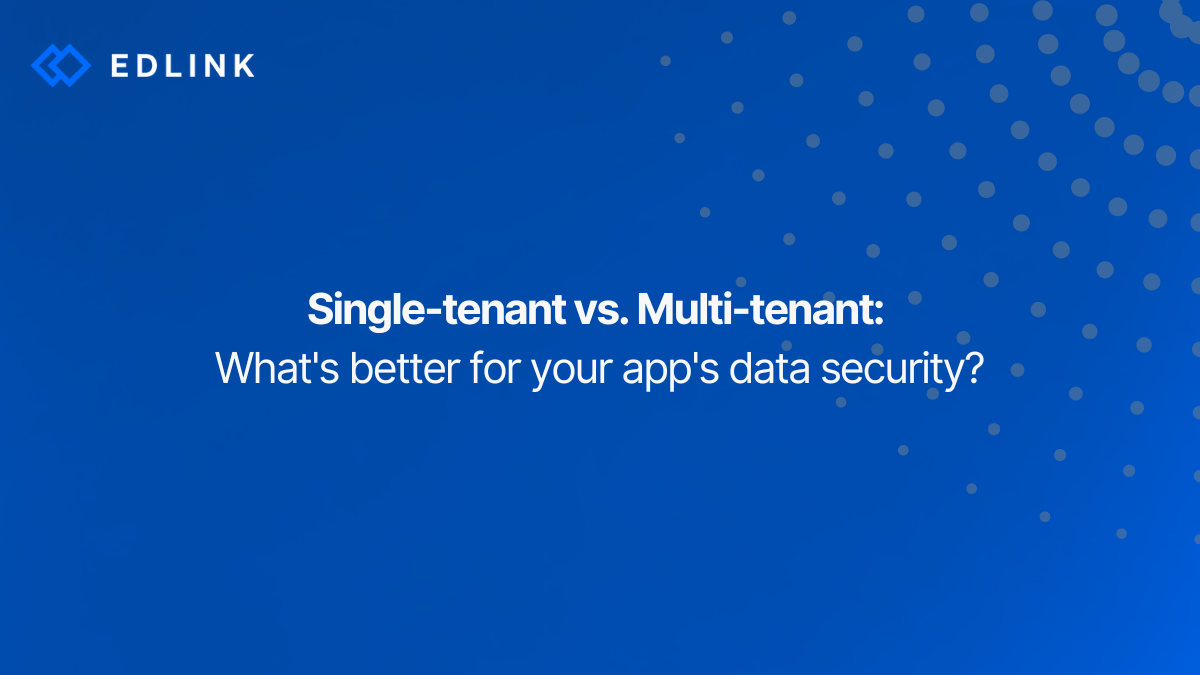Data Storage 101
Let's go over some terms
- School Data: Information about an edtech company's school customers, including the names and emails of students and staff.
- Server: A system that stores data and sends it from the edtech company to schools, and vice versa.
- Single-tenant system: A system of servers that only stores data from one school or district.
- Multi-tenant system: A system of servers that stores data from multiple schools or districts.
Single-tenant systems provide each school with a separate system of servers. This decreases the chance of a database-wide security incident. However, more servers equal more security vulnerabilities.
Multi-tenant systems, which keep data in one place, are a more secure option. They allow edtech companies to better focus security resources and decrease exposure to bad actors.
What's the difference between a single-tenant system and a multi-tenant system?
School data can either be stored in a single-tenant system or a multi-tenant system.
- A single-tenant system only interacts with ONE school or district's data.
- A multi-tenant system can interact with multiple schools or districts.
Pros of single-tenant systems:
- If the database has a security breach, it's likely that not all of the data will be compromised. This is because the attacker would only have compromised 1 of the multiple systems.
Cons of single-tenant systems:
- More systems create more security vulnerabilities. In other words, more places for bad actors to hack into.
- More systems are more challenging to manage. It's harder to make database-wide changes to multiple systems. It's also harder to make sure all systems are secure.
- Single-tenant systems require more complex software to support. This is a source of security challenges, which include fixing database-wide bugs and maintaining a more complex code deployment strategy.
Pros of multi-tenant systems:
- Using one system creates the least possible number of security vulnerabilities.
- It's easier to make database-wide updates and prevent bugs.
- It's easier to make one system secure. There's less to track, manage, update, and protect.
Cons of multi-tenant systems:
- Using an individual system potentially leaves more data exposed during a security incident.
Which is better for data security?
Multi-tenant. Why?
Because less exposure to security vulnerabilities is key to protecting school data. That's why we (Edlink) use an individual multi-tenant system.
Additionally, using single-tenant systems stretches security resources too thin. It's difficult for companies to ensure every server is equally secure at all times.
Read more about Edlink's Security and Privacy Practices
If you’re interested to learn more about Edlink’s Unified API, here’re other articles we’ve written.
- Edlink’s Security Center - Our Collection of Security Articles
- Edlink’s Privacy Center - Our Collection of Privacy Articles
- How does Edlink Handle Data Privacy and Security?
- How Edlink Handles School Data
- Does Edlink store PII?
Ready to Start Integrating?
Create a developer account to set up a test sandbox.
Or if you think Edlink can help you on your integration journey, email us at support@ed.link to set up a call.

